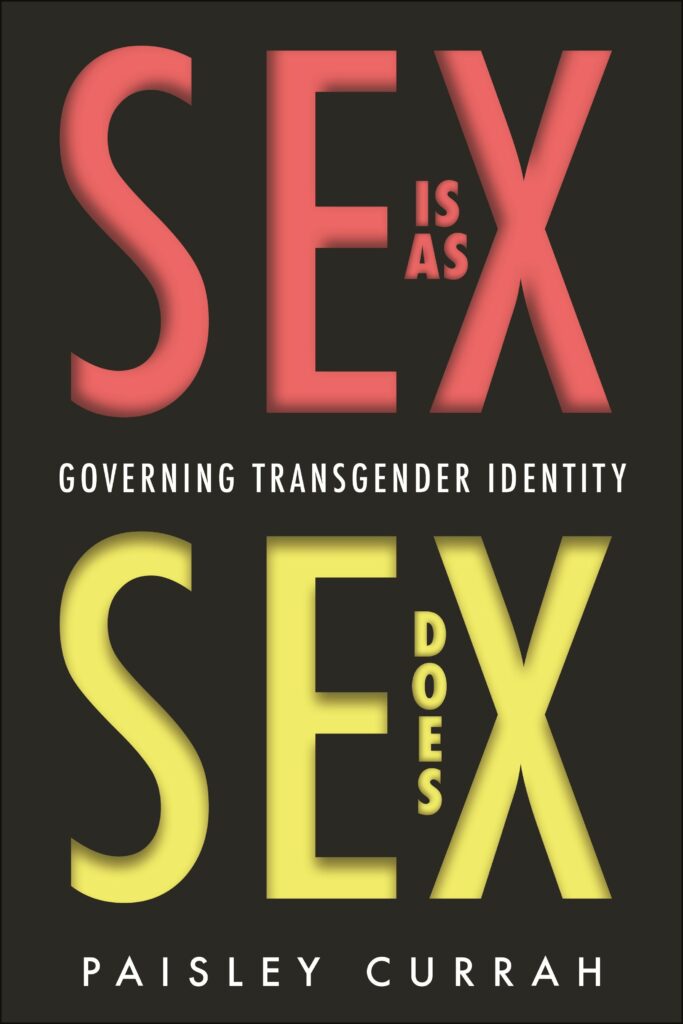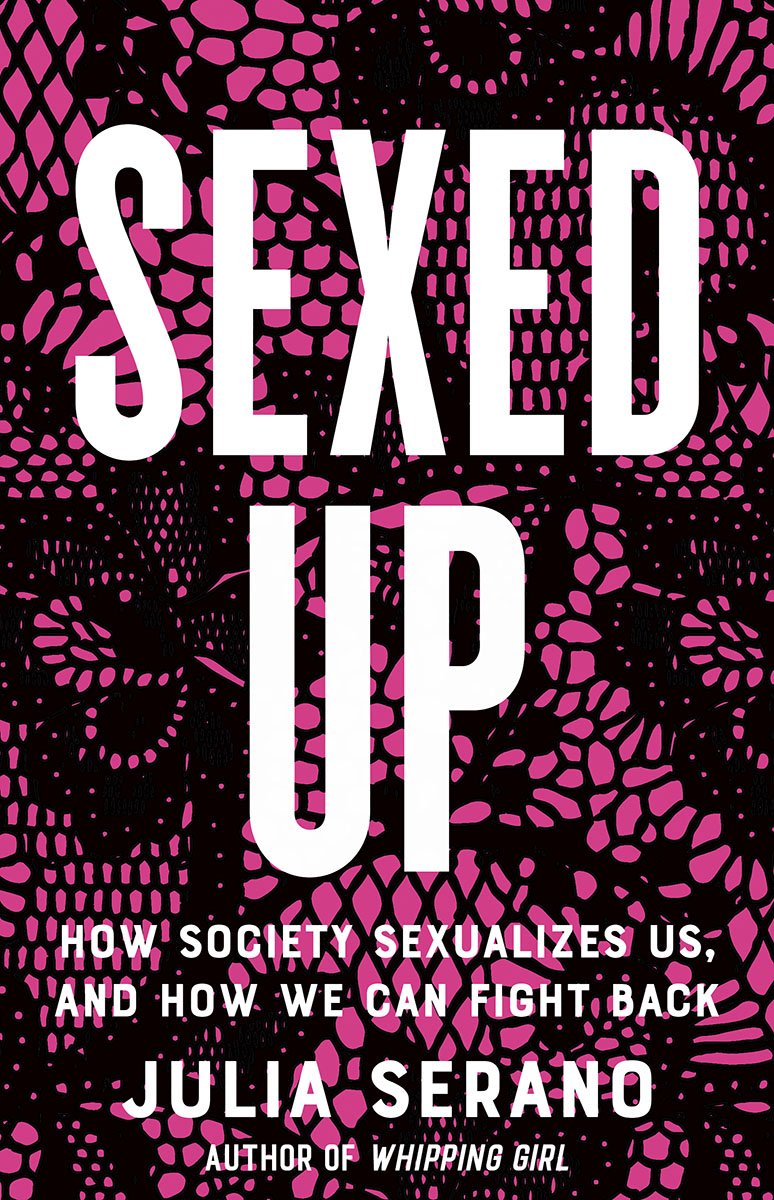
In 2007, the biochemist and genetic researcher Julia Serano published the spellbinding Whipping Girl, in which she coined the term transmisogyny to name and therefore describe the discrimination directed at trans women as part of a general hatred of women. A year earlier, Paisley Currah coedited the first decisive exploration of the rights of trans people—Transgender Rights (Minnesota University Press, 2006)—and, in 2014, he and Susan Stryker cofounded TSQ: Transgender Studies Quarterly, the first academic journal devoted to trans issues beyond the medical. When I first started teaching a Trans Lives course for students at a small, midwestern, liberal arts college in 2008, terms like intersectional feminism and the inclusion of trans perspectives and queer existence within feminism existed largely in academia. Even so, there weren’t very many books on trans experiences—perhaps a couple dozen—so I filled in the gaps with articles and anything else I could find. Julia Serano and Paisley Currah were on that early syllabus and, unlike many other works, remain every time I revise the class.

The backdrop to teaching a Trans Lives course these days is a barrage of absurd anti-trans legislation that borders on cruel. On International Women’s Day 2022, for instance, the Idaho House of Representatives voted 55-13 in favor of a bill that would criminalize anyone, including a parent, who permits a minor to get puberty-blocking drugs. Texas governor Greg Abbott ordered “all licensed professionals who have direct contact with children” to “report anyone receiving gender-affirming treatment” to child welfare authorities. At least fourteen states have proposed bills or passed laws blocking trans youth from participating in sports or getting medical care, and Florida is making it illegal to acknowledge that LGBTQ+ people exist to anyone under the age of ten. And then there are those who, under the banner of feminism, claim that trans people are the problem—not people who experience gender-based violence and discrimination.
So, the fact that both Currah and Serano have new books is reason to cheer. Each discusses trans history, provides perspective on the current trans movement, and situates the discrimination, violence, and demands for documentation that trans people endure within the movements to end gender-based oppression (along with race, class, and ability, and all the intersections of identity).
Currah’s Sex Is as Sex Does explores the legal history of how gender markers work (or don’t) in trans people’s lives, starting with the anonymous case of a woman who, in 1965, was the fifth trans person born in New York City to request that the gender marker on her birth certificate be changed, and whose request indicated that “a few odd cases, mere bureaucratic blips, now seemed to augur a larger trend.” Indeed: in the ensuing five decades, Currah writes, various standards and medical letters and debates happened among medical experts, trans advocates, psychologists, politicians, and bureaucrats: “I review a series of ‘what sex is’ positions—sex is attached permanently to the body at birth; sex is genitals; sex is gender identity; sex is nothing but a proxy for gender, which is itself an effect of power arrangements . . .” None of these debates are new to students of trans history, but the granular scholarship he presents is both exceptional and visionary.
Currah, intellectual elder, tells us we’re asking the wrong questions altogether. He directs us away from these messy, interdisciplinary arguments (where no one side ever persuades the other) to look at what sex, as a category, does each time it appears on a document. It’s a tricky move; as an activist, I want to know what to do about gender-based discrimination. As an educator, I see that my students want to know what gender is. Reading Currah feels much like having someone come up and move your binoculars ever so gently to the left so that you suddenly see both the forest and the trees—if trees could be meticulously cited. But don’t let a book that’s half made up of footnotes scare you: Currah is quite accessible on complex topics, making this a work to be taught not just in gender studies classes but political science, legal theory, public policy, and more.
Julia Serano’s book, Sexed Up: How Society Sexualizes Us, and How We Can Fight Back, analyzes the cruel ways people treat others—whether catcalling, slut-shaming, or committing sexual violence—and seeks to figure out why we do it. I never expect anything lightweight from the author of Whipping Girl, and no one ever should, but this book in particular scratches an itch by making a feminist argument about sexism and patriarchy from a fully trans- and queer-inclusive point of view. She writes that it would be “entirely reasonable” for her to consider her experiences with street harassment sexism, and those she’s experienced as transphobia, but ultimately, she explains she “didn’t want to merely describe the tusk or the tail” of the elephant in the dark room but “wanted to understand the entire elephant.”
As in the case of Currah’s book, the seeds of this work only existed in academia until recently. Serano provides numerous if not exhaustive references and citations while still managing to talk to you like a friend with an axe to grind. Nearly every chapter seems to expect a confused or skeptical response; Serano, taking us with her, often ends chapters by reassuring the readers that the next chapter will clarify and expand on what she’s just argued. Unlike most people with axes to grind, though, Serano, a scientist by training, reads widely, and has been thinking hard about gender for at least two decades. When Serano introduces a concept, just as she does with the idea of “phantom invitation”—when men in public presume to receive an invitation you haven’t issued simply because you have made the choice to exist in public as a woman—I expect the idea to pervade and permeate feminist thought.
Vital questions about gender are answered in remarkable ways by both these writers. Still, sometimes I fear that cis feminists are not teaching or even reading the work of Currah and Serano, who have been thinking deeply about gender, and the way it is used to oppress cis and trans people alike, for a long time. When I see the terrifying arguments used by lawmakers to pass anti-trans legislation, I am convinced that Currah and Serano—for whom gender and sex are necessary to consider and understood to be complicated—are among our best feminist thinkers.

